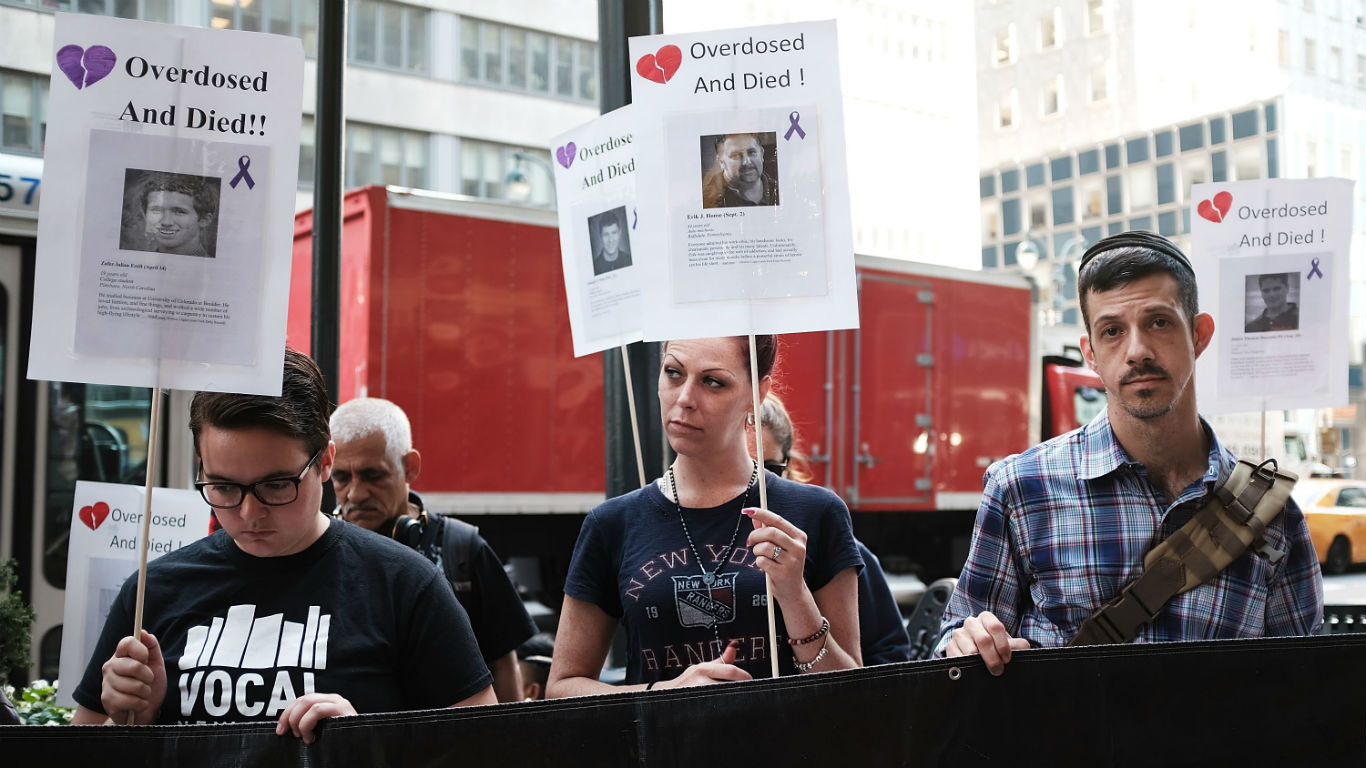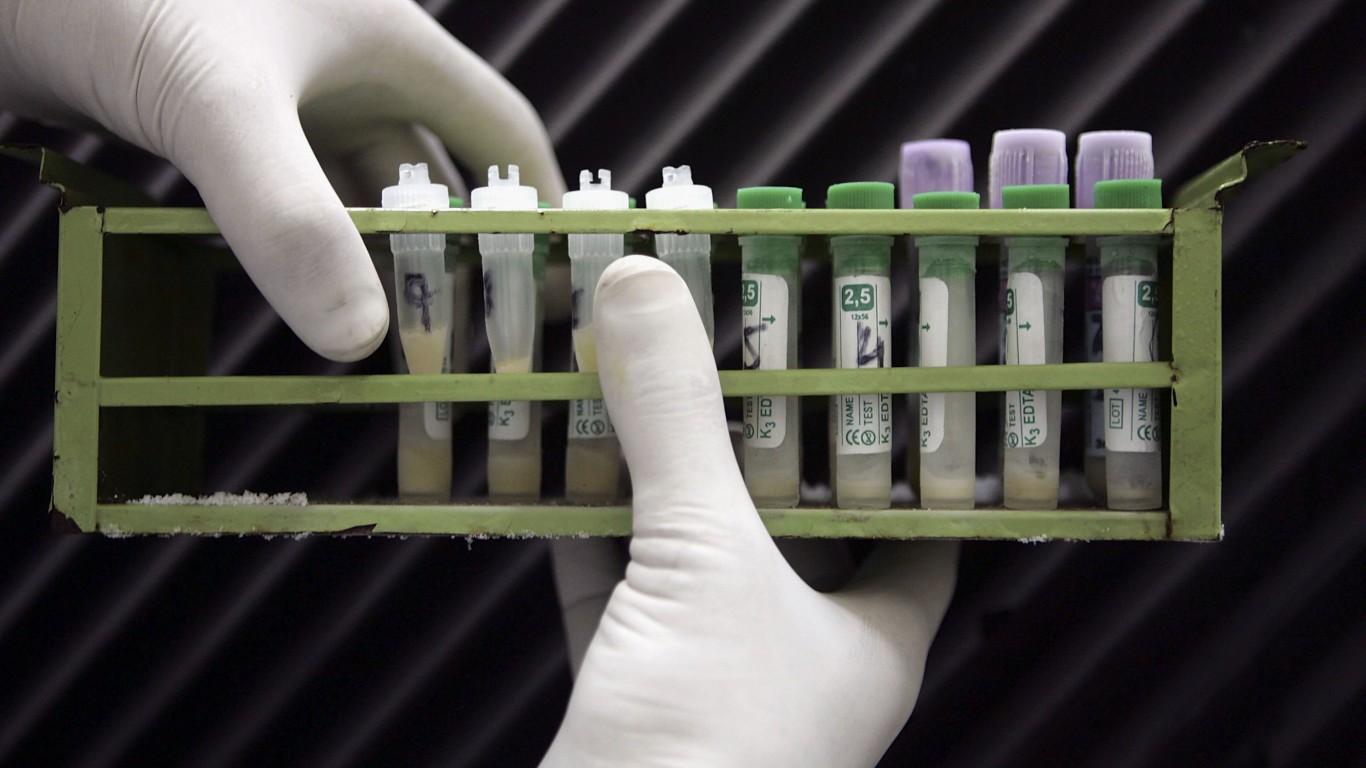Special Report
The Most Serious Public Health Issues America Is Facing Today

Published:
Last Updated:

Raw statistics about diseases and mortality don’t always reveal the underlying causes or health issues that contribute to these statistics. And it’s these health issues — such as obesity and inactive lifestyle — that have become some of America’s most serious public health concerns.
For example, we know that heart disease is the No. 1 cause of death and hospitalization (not counting births) — and these are the states with the most heart disease.
But we also know that the risk of heart disease — and a number of other deadly or debilitating health conditions — is greatly increased in people who eat a poor diet that increases cholesterol, are obese, are inactive, or smoke — and these are the states with the most smokers.
Current statistics is not sufficient to identify public health issues. It is also important to look at trends. For example, suicide is the 10th leading causes of death, claiming the lives of more than 47,000 people in 2017. But what’s more alarming is that suicide is rising across the United States.
Similarly, the opioid epidemic has become among the most serious public health issues in just a few years. Prescriptions for painkillers are down, but they are still killing Americans. While many health outcomes relate to socioeconomic conditions, these, perhaps denote other societal failures.
In addition to public health issues related to lifestyle, mental health, and socioeconomic factors, in recent years environmental factors have also taken center stage. Mostly, the effects of global warming — from floods, fires, hurricanes, and more — are now affecting more and more Americans.
Click here to read about the most serious public health issues America is facing today.
To identify the most pressing and serious public health issues facing America today, 24/7 Tempo reviewed data and information on health problems and concerns from the Centers for Disease Control and Prevention and the National Institutes of Health as well as from their separate divisions.

1. Obesity
Obesity can lead to heart disease, type 2 diabetes, hypertension, stroke, some types of cancer, high cholesterol, and many other health conditions and diseases. Some 39.6% of the American adult population were considered obese in 2017, up from 30.5% in 2000. There is some good news, however. Childhood obesity, which had grown rapidly to 17.1% in 2003, began to level off, with 18.5% of children between ages 2 and 19 considered obese in 2017. The number is still unacceptably high, putting one in six at risk of poor health.
The implications of an obese populace go beyond the health impacts. The economic costs are immense. The annual cost of obesity in the United States is estimated to be between $147 billion to $210 billion, according to “The State of Obesity” report from Trust for America’s Health and the Robert Wood Johnson Foundation.
[in-text-ad]

2. Physical inactivity
When it comes to lifestyle, physical activity is one of the best things people can do to improve their health. Getting enough physical activity could prevent 1 in 10 premature deaths, according to the Centers for Disease Control and Prevention (CDC). Inactive people are at higher risk for serious health problems like heart disease, type 2 diabetes, obesity, and some cancers. The annual economic costs associated with inadequate physical activity are $117 billion.
Fortunately, the message about the importance of exercise is getting heard and many people are responding. In the past 10 years, the number of people engaging in no physical exercise in their leisure time has decreased at the rate of nearly 1% a year, from 36.2% of adults in 2008 to 25.9% in 2017.

3. Poor nutrition
Nutrition is a persistent problem nationwide, with only 10% of adults eating the government recommended amount of fruits and vegetables each day. The average adult consumes only 16% of the recommended servings of fruit and 9% of recommended servings of vegetables. For high school students, the numbers are far worse, with the average student meeting 9% of fruit consumption goals and 2% of needed vegetables. At the same time, the most popular fried chicken, burger, and pizza fast food chains are serving larger portions with more sodium.
A recent study found that consumers are confused by what they consider as conflicting information about nutrition, so tend to rely on old habits. Often, they limit their fresh food consumption due to cost and access. On the positive side, there are signs that Americans are trying to eat a healthier diet: there has been a steady decrease in the amount of sugary drinks consumed and an increase in water consumption; fast food chains are incorporating a limited number of healthier choices in their menus; and the public generally wants to eat sustainably produced food with fewer artificial ingredients.

4. Substance use disorders
There were over 70,000 drug overdose deaths in the United States in 2017, up from about 6,700 in 1980, with the largest jump between 2013 and 2017. The sharp increase is largely attributable to the skyrocketing number of deaths associated with fentanyl and other synthetic opioids, which rose from 3,000 to 28,000 during the four years leading up to 2017. Drug overdoses were the No. one killer of Americans under 55 in that year.
People with addiction often have associated health problems, including heart and lung disease, cancer, and nervous system impairment. According to the National Institute on Drug Abuse, the estimated overall annual costs of illicit drugs and prescription opioids are over $271 billion
[in-text-ad-2]

5. Tobacco
Tobacco use is now widely known to cause or contribute to a long list of health problems — from various cancers to negative pregnancy outcomes to impaired immune function. It is estimated that cigarettes reduce the life of the average smoker by 10 years. Through a persistent public education campaign and increased taxes on cigarettes the adult smoking rate has declined significantly from 42% when the first Surgeon General’s report on smoking was published in 1964 to 18% today. Despite this cigarettes are still causing 480,000 premature deaths a year and are still the leading preventable cause of preventable disease and death in the United States.
Unfortunately, the decline in tobacco use is slowing and there are indications that tobacco will remain a serious health issue far into the future with electronic cigarettes of particular concern. Most alarming is their skyrocketing use by America’s youth — over 3 million high school students were “vaping” in 2018, up 78% from 2017. E-cigarettes are believed to have several serious health impacts, including increasing the possibility of addiction and long-term harm to brain development and respiratory health.

6. Access to health care
The United States spends more on health care per capita than any other country in the world, at over $10,000 a year. Nonetheless, America falls behind other wealthy countries in any number of quality of health measurements and has the highest level of inequity in available, affordable care.
Key to accessible health care is insurance. Uninsured people live with more illness and have a higher mortality rate than those with health insurance. Cost is the most common reason for the high number of uninsured. Another barrier to broad-based health care is actual availability. There are fewer doctors in the United States — 2.5 per 1,000 people — than any European Country except Poland, with Austria topping the list with twice as many doctors per capita. The problem is most vexing in rural areas, where the ratio of physicians to patients is just 1 to 2,500, according to the National Rural Health Association. See how many doctors are in your state.
[in-text-ad]

7. Mental health
Mental health disorders are among the most common causes of disability in the United States, with 18.1% of the population suffering from mental illness and 4.2% from debilitating mental illness that often requires hospitalization. Mental illness, especially depression, increases the risk for many types of physical health problems, especially long-lasting one like stroke, type 2 diabetes, and heart disease. In turn, chronic conditions can increase the risk for mental illness.
While there has been a slight decrease in adults with mental health, of particular concern is the increasing rate of youth with mental health issues, according to “The State of Mental Health in America” report by the nonprofit Mental Health America. Other concerns include mental issues across particular populations, such as elderly sufferers of dementia and victims of trauma, especially within lower-income areas, which tend to experience worse mental health than wealthier areas. Today, 9 million Americans are not getting care for their mental illness, mainly because of cost.

8. Suicide
In 2017, 47,000 Americans died from suicide, the 10th most common cause of death in the country, but the second for young people between ages 10 and 34. Millions of other Americans thought of or attempted suicide that year. Not only is suicide the 10th leading cause of death, but it is increasing at an unsettling pace — 31% between 2001 and 2017.
Suicide rates are four times higher for males than females, and, in terms of ethnicity, highest for American Indian and Alaskan native populations (an alarming 44.6 per 100,000), followed by non-Hispanic whites (36.1 per 100,000). Regionally, the Mountain states report more than double the incidence of suicides as California and a handful of Eastern States, including New York.
Half of the people who commit suicide have an underlying mental disorder, mainly depression, but there are other risk factors, including incarceration, poor job satisfication or job loss, history of abuse, social isolation or bullying, social loss, family history of suicide, diagnosis of a serious disease, access to firearms, and substance abuse.

9. Gun violence
In 2012, Americans nationwide were shocked by the widely covered mass shooting at Sandy Hook Elementary School in Newtown, Connecticut. Six adults and 20 children 6 to 7 years old were killed. Since then, there have been 2,124 mass shootings in the United States.
Compared to other countries of similar affluence and development, the United States gun violence problem is completely out of proportion. With less than 5% of the world’s population, the United States has more than 40% of the world’s civilian-owned guns. And largely as a result, the 29 firearm homicides per 1 million people in the U.S. is the highest among advanced nations, according to the Human Development Index. The next highest firearm homicide rate is 7.7 per 1 million people in Switzerland.
[in-text-ad-2]

10. Automobile accidents
Seatbelt usage, traffic law enforcement, and safety improvements in vehicles and infrastructure have helped save incalculable numbers of lives. Still, driving remains a very dangerous activity, and the vast majority of Americans regularly travel by car or truck.
Motor vehicle crashes were, until 2017, the most likely cause of accidental death in the United States. (Due to the rise of fentanyl abuse opioid overdose surpassed car accidents). With the odds of dying at 1 in every 103 deaths, motor vehicle crashes are still the sixth likeliest cause of death in the United States. Approximately 37,000 people die, and 2.35 million are injured or disabled, each year across the country from motor vehicle-related accidents.

11. HIV/AIDS
There is still no cure, but with the development of a series of revolutionary medical treatments, leading to highly active antiretroviral therapy (HAART), the mortality rate for HIV/AIDs victims dropped dramatically, peaking at 41,699 in 1995 and declined to 6,546 in 2015, creating a sense that the crisis is over. It is not. Over 1.1 million Americans are living with HIV/AIDS today, and there are nearly 40,000 new diagnoses every year. It is also among the top 10 leading causes of death for people between the ages of 25 and 44.
The number of new cases of HIV/AIDs had been declining since the 1990s, but it has leveled off in the last few years, meaning that information and adequate medical care are not reaching significant vulnerable populations — mainly young, low-income, gay, black and Hispanic men. Another serious barrier to elimination of the disease is that an estimated 15% of those infected are unaware that they carry the virus, and unknowingly continue to spread the disease.
[in-text-ad]

12. The climate emergency
Despite dire warnings and an incomplete understanding of the consequences, humanity continues to extract and burn fossil fuels as its primary energy source. Heat waves, droughts, heavy rainfall, floods, fires, and storm surges are among the weather and climate events that will become increasingly more extreme. Between 2012 and 2016 alone, a trillion tons of ice disappeared — a mass that if combined would form a mass comparable in size to Mount Everest. The worldwide use of fossil fuels — and with it global greenhouse gas emissions — grew last year.
If the burning of fossil fuels does not slow down, sea levels could rise by as much as 10 feet before the end of the century. This will affect approximately 5 million Americans who live fewer than 4 feet above sea level — and probably many more.
But it’s not just extreme heat and sea level rise. Climate change will have many other severe and dire consequences on public health. For one, rising air pollution (caused by hotter weather and increased ozone pollution) would increase lung and other diseases, and it is estimated pollution would add at least 1,000 to 4,300 premature deaths nationally per year by 2050. More allergens (caused by higher CO2) could severely affect people with asthma. The incidence of diseases carried by vectors like ticks and mosquitoes (like Lyme disease and West Nile virus) are also expected to rise. Climate change, which will also impact our food and water supply, will likely transform lives on our planet in ways we cannot fathom if we don’t do something about it now.
The thought of burdening your family with a financial disaster is most Americans’ nightmare. However, recent studies show that over 100 million Americans still don’t have proper life insurance in the event they pass away.
Life insurance can bring peace of mind – ensuring your loved ones are safeguarded against unforeseen expenses and debts. With premiums often lower than expected and a variety of plans tailored to different life stages and health conditions, securing a policy is more accessible than ever.
A quick, no-obligation quote can provide valuable insight into what’s available and what might best suit your family’s needs. Life insurance is a simple step you can take today to help secure peace of mind for your loved ones tomorrow.
Click here to learn how to get a quote in just a few minutes.
Thank you for reading! Have some feedback for us?
Contact the 24/7 Wall St. editorial team.